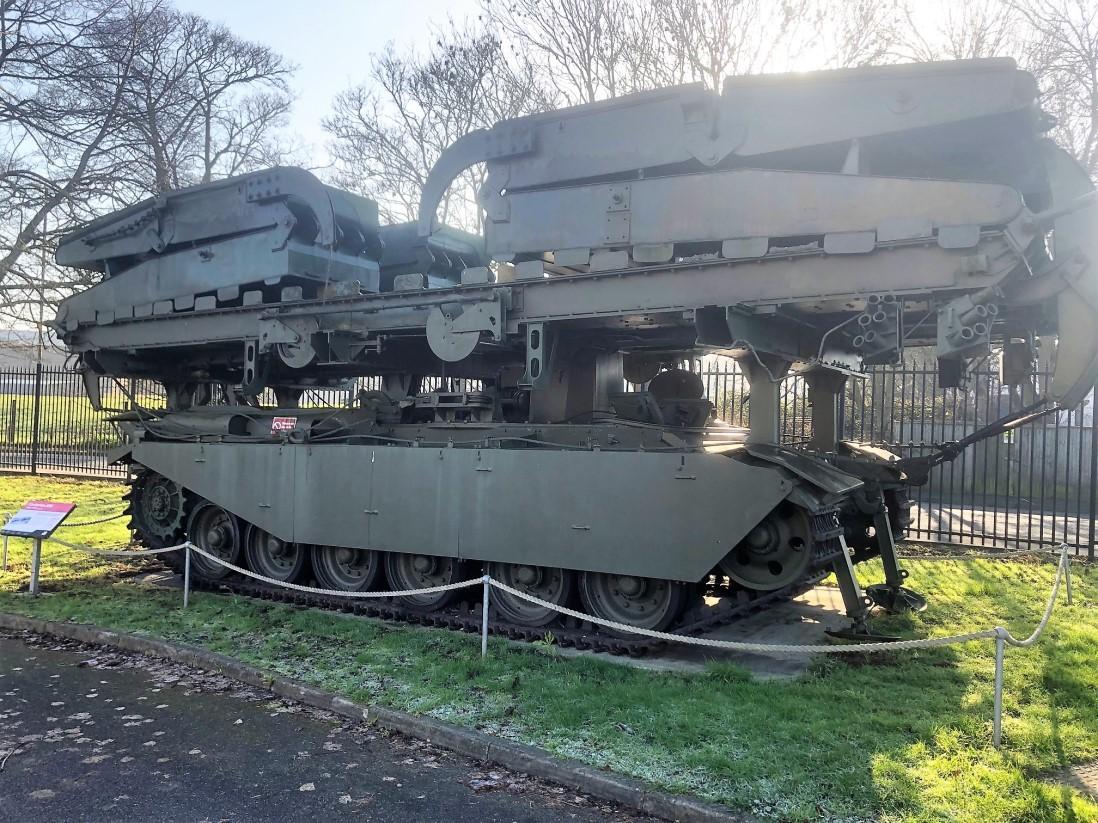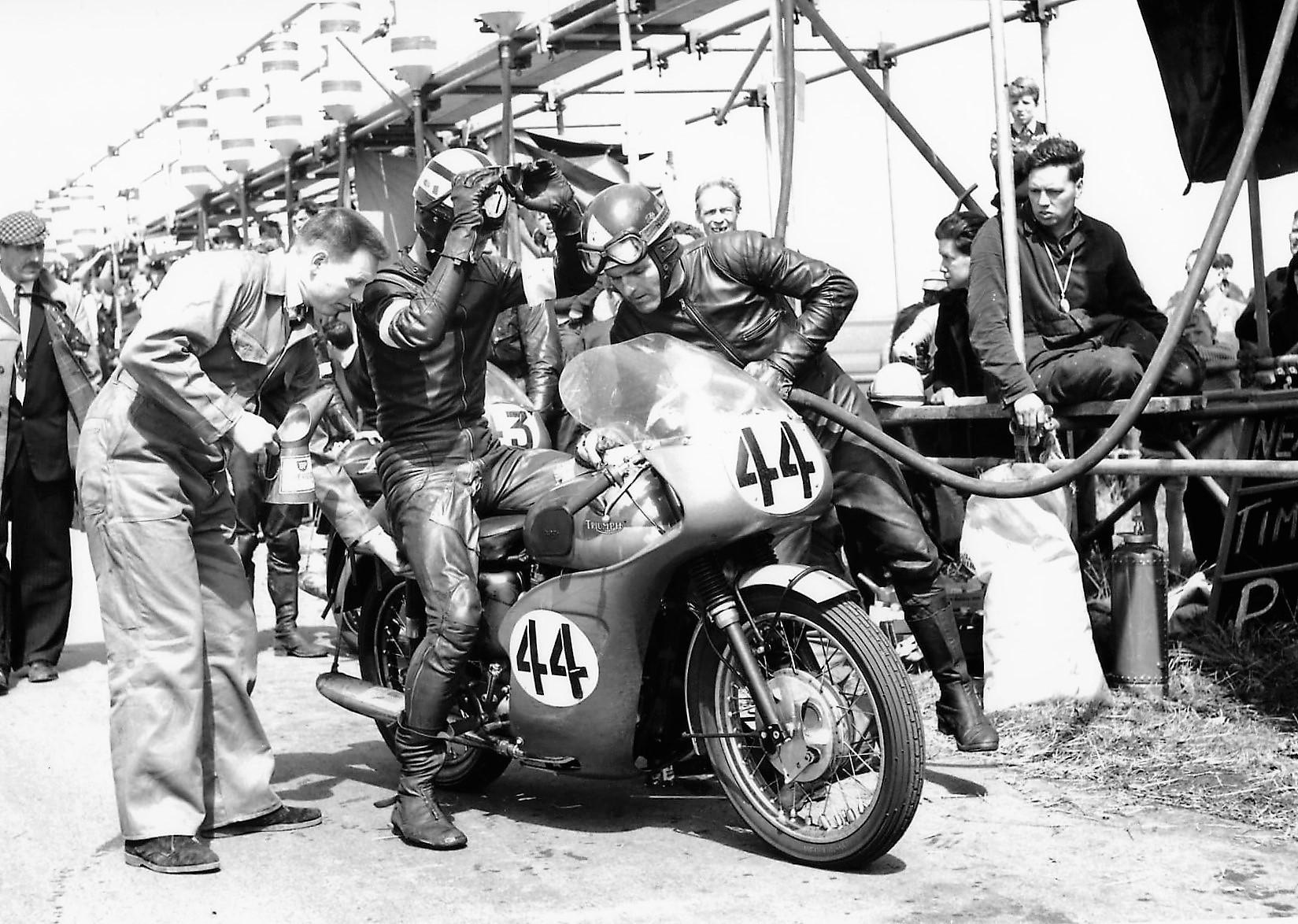NEWSLETTER OF THE BRITISH MOTORCYCLE CHARITABLE TRUST




FROM THE CHAIR



Welcome to our first newsletter of 2023. I’m pleased to report that the changes to our membership offering announced in the last issue have been generally well received by our members, and feedback from the museums is good, so we’re able to look forward to the scheme continuing sustainably into the future.
A big thank you to the members and trustees who have contributed to this newsletter. Editor Andy Bufton is always on the lookout for material to fill these pages, so if you have a story to tell, report of a museum or show visit, anything connected to British motorcycles and the industry, please do get in touch. Andy’s contact details are on page 8.

As you’ll see below, we’re having another BMCT Day at Sammy Miller’s superb museum in September. It was great to meet so many of our members at our first event last year, and I’m looking forward to getting acquainted with lots more of you next time. See you there!
Best wishes,
Paul BarnesBMCT British Bike Day
While last year’s joint BMCT/Norton OC/VMCC Day at the Sammy Miller Motorcycle Museum last year was undoubtedly a success (thanks in no small part to the kind weather) we were very aware that the mid-week date wasn’t convenient for many BMCT members who had to be at work. So for 2023 we’ve arranged with Sammy to piggy-back with his annual British Bike Day, scheduled as usual for the first Sunday in September.

If arriving on a British bike you are invited to park up in the Museum courtyard from 10am, but please note, no vehicular exit from the courtyard before 1pm. Anyone wishing to leave earlier, please park in the main car park.
No booking is required and everyone is welcome!
The museum will be open as usual, and we are looking forward to welcoming BMCT members past, present, and future.
SHOW YOUR CLASSIC BIKE AT A WARWICKSHIRE FÊTE
Here’s an opportunity for classic bike owners to show their machines as part of a classic vehicle display at Ullenhall Fête. The fête is outdoors on Saturday 10th June, from 12.00 noon until 4.00 pm, held at the village hall in Ullenhall, near Henley in Arden, Warwickshire, postcode B95 5NW. Parking of bikes for display will be on a clean tarmac surface. The Organiser is Malcolm Aldridge, former BMCT Trustee and Vice-Chairman. He would need to know in advance who/how many are coming, and his phone number is 07767 354456.

BMCT trustee Mike Penn recently delivered the final two machines, a Dayton Albatross and a Winn City Bike to the Isle of Man to complete the British Motor Scooter Collection display at the island’s superb Isle of Man Motor Museum. Both scooters have undergone long and painstaking restorations by volunteers at the Haynes Museum, and our photos (clockwise from above left) show the Albatross in all its glory, under restoration in a public area of the museum, and “as found” by Robin Spalding, who put the original collection of 42 motor scooters together. Mike is seen below on the left handing over the scooters to the Isle of Man Motor Museum’s Curatorial Director, Darren Cunningham.


Dayton scooters were made in Park Royal, London from 1956 to 1960, and our example has the 225 cc Villiers engine. The Winn City Bike, powered by a 12v battery, dates from 1966, and was designed to fit into a car boot so you could park on the outskirts of a busy city, unload your electric scooter, and enjoy a quiet non-polluting ride the rest of the way to the office. It didn’t catch on.


Visit to the Royal Engineers Museum, Gillingham, Kent


 By trustee Nick Jeffery
By trustee Nick Jeffery
One of the recent additions to the list of museums supported by the BMCT is that of the Royal Engineers. Why the Royal Engineers Museum as it is not one that immediately comes to mind as being associated with the motorcycle-oriented objects of the charity? It is because the early World War 1 despatch riders were part of the Signals Division of the RE and the opportunity arose to purchase a Blackburne typical of machines owned by early volunteers who brought their own civilian machines when they enlisted. The museum was delighted to accept the bike and have prepared an excellent exhibit showing not only this but also, thanks to the formidable amount of research conducted by former owner Martin Shelley and his brother Nick, a collection of artefacts relating to the Burney brothers who were connected with Blackburne and their compatriots and activities

So what else is in the museum? Well firstly on arrival some serious hardware is displayed in the grounds outside the former Electrical School of the Royal Corps of Engineers. For example, a Centurion ARK - an Armoured Ramp Carrier ‘portable bridge’ based on a Centurion Mark V tank. This has expanding ramps that can be deployed either end to give a span of 75 feet and is able to carry loads up to 80 tons with the Centurion acting as the middle support in up to 2 metres of water.
Or (above) a Trojan AVRE – Armoured Vehicle Royal Engineersbased on a Challenger 2 and first used in Afghanistan with a ‘Swiss Army Knife’ set of equipment to bulldoze, plough, bridge ditches and excavate. It also can fire the trailer-mounted Python – a rocketpropelled exploding hose used to clear minefields and of especial benefit to clear IEDs (improvised explosive devices) in Afghanistan.
Then inside a huge variety of exhibits from a V2 A4 rocket mock-up and ‘how-it-works’ to bomb disposal techniques. An excellent display on how Camp Bastion in Afghanistan was constructed – an area 4 miles by 2 miles with all the facilities of a fortified small town including airfield and hospital. Barricade clearance in Northern Ireland with an armoured wheeled tractor. (Cont. on p.5)

How
But the story goes much earlier with World War 1 mining and trench construction techniques.shown and famous characters like Herbert Kitchener (of ‘Your Country Needs You’ fame) and Gordon of Khartoum both being commissioned into the Royal Engineers and whose stories are well told. And even earlier with Wellington’s map of Waterloo. The engineers were there in the forefront of operations world-wide – Cyprus, Kuwait, Canada, Egypt, Borneo, Malaya, Gulf War, Falklands and many more countries. And don’t miss the magnificent Medal Room where medals won by the Corps are displayed.
So a whole host of things to see, easy bike and car parking on site, a nice café and of especial interest to those of an engineering mindset. As Field Marshal Montgomery said: ‘The more science intervenes in warfare, the more will be the need for engineers in the field armies.’
Royal Engineers Museum

Prince Arthur Road
Gillingham ME7 1UR
https://www.re-museum.co.uk/
More on the Egli Vincent

Built by BSK Speedworks of Leighton Buzzard for a customer who had purchased an original Shadow 70 kit from Roger Slater back in the 1960s and had a 1949 Vincent HRD Rapide engine to go in it.


The kit comprised of British made (under licence) frame, swingarm, Metal Profile forks, Girling rear shocks, alloy tank and seat. All were unused/never fitted but in poor condition having sat in storage for the best part of 60 years.
The frame, although being nickel plated originally, was showing signs of rust and was generally dull so was blasted with a view to powder coating. As it turned out the blasting process brought it up to a nice finish so it was lacquered and left it original.
The forks were in poor condition, with pitted stanchions and corroded alloy legs, these were re-plated, fitted with new seals, and then the legs and top yoke were polished. The springs were fine, having been

The seat had been in a plastic bag for many years and was used as it was, with a bit of oil and polish. The tank was badly corroded, luckily externally only (having never seen fuel) and was polished to a mirror finish.
The bike is built as closely as possible to the original specification of the Slater Shadow 70.
At the rear, Girling shocks are fitted with a Vincent hub and brake with sprocket carrier laced to an 18” alloy rim. The front brake is a Seeley as fitted to G50s laced to a 19” alloy rim.
BSK Speedworks can build you a bike, based on the Egli, or supply new Vincent engines and Egli Vincent parts. Contact Ben Kingham, info@bskspeedworks.co.uk Website: www.bskspeedworks.co.uk

Museum visit report from Mike Ricketts
As the BMCT’s “Man in France”, for this visit I have traversed the Pyrenees into Catalonia. The Museu Nacional de la Ciència i la Tècnica de Catalunya (National Museum of Science and Technology of Catalonia, or MNACTEC), is located in Terrassa, 25 km north of Barcelona, and is very well worth a visit.
The MNACTEC is housed in a beautiful former textile industry building that was constructed in 1907/08, and it was known locally as the “Vapor” (the name given because of the steam engines that provided its power). MNACTEC covers a total surface area of 22,200 m², around half of which corresponds to the former rectangular shopfloor section, where the Museum’s main exhibitions are now set up. The roof contains 161 vaults made from flat bricks, supported by 300 cast iron pillars, which also served as the downspouts for the drainage and the support for the driveshafts from the steam engine to all the machines in the factory.

The Transport section includes a large collection of Montesa motorcycles. Amongst them are a rare (and much sought after) Crono 350cc, road going bike. Powered by a variant of the Enduro 360 H6, single-cylinder, air-cooled, two-stroke, it was first presented in 1980. It was sold between 1981 and 1984 with 700 units produced but it was against stiff opposition, in particular the Yamaha RD350 and its variants.
Also on display is the Villalbi (above) which, despite isolated cases of bicycles with an auxiliary engine, is generally accepted to be the first motorcycle manufactured in Spain.


The prototype was ready in 1905. after two years of work but, there being no support industry to turn to, Miguel Villalbi abandoned the manufacture of this motorcycle after making a small series of five units. It was a single-cylinder, four-stroke cycle with opposed valves (the automatic intake) and long stroke (78 mm x 90 mm equivalent to 429.83 cc), ignition by battery and coil, V-belt transmission without gear change and with pedals to help on steep slopes, while in the upper part of the fuel tank there were three little levers, one to regulate the advance of the spark, another for fuel and another for air, the decompressor control being located on the handlebar.
Another eye catcher is a Montesa 125cc Sprint. The bike was designed by Paco Bulto for racing and it took part in the Lightweight TT in 1954 and 1956. The version in the museum dates from 1956 and has the 6-speed gearbox. A 125cc, single-cylinder, air-cooled, twostroke, producing 14cv at 10,500 rpm.
A final point. MNACTEC is a full-blown Science and Technology Museum with exhibits to keep most people happy and interested. There are cars, trucks and experimental vehicles in the Transport section plus steam traction and agricultural equipment. If you are on holiday in the area, it is easily reached by public transport.
The Museum is open Tuesday - Sunday (times vary according to season) and has a comprehensive website (available in English) at https://mnactec.cat/
The BMCT’s two World War 1 Despatch Riders’ motorcycles are now on display at the Sammy Miller Museum. The Triumph Model H and Douglas WD were expertly restored by BMCT member Chris Roberts, who spent many hours tracking down rare parts and accessories to ensure they are as accurate as possible. Chris was also responsible for the restoration of the 1917 Matchless Vickers machine gun outfit currently on display at the Tank Museum at Bovington.







